Abstract
A comparative study of marine members of the family Vibrionaceae with the technique of numerical taxonomy revealed habitat segregation as well as a cosmopolitan nature of species distribution among the vibrios in different marine environments. The bacterial strains analyzed were isolated from seawater, sediments, phyto- and zooplankton, and fish in the Indian Ocean, the South and East China Sea, and West Pacific Ocean, and coastal areas of Japan. A total of 155 morphological, physiological, and biochemical tests were carried out for each of 405 strains examined. The results showed that most of the large taxonomical clusters which emerged from the computation corresponded to ecological groups which have particular niches. For instance, each group of seawater vibrios inhabited a particular water layer of limited depth range, in spite of the fact that strains of the group were isolated from sampling locations spread over a wide area from the Indian Ocean to Japanese coast. Various vibrio groups showed remarkable differences in their physiological and biochemical activities, and the activities of each group seemed to correspond with its ecological niche. The strains which inhabited surface-water layers grew fast and actively utilized many high-molecular-weight organic compounds and carbohydrates that are derived from fresh, easily degradable organic matter present in the surface waters, whereas the middle- and deep-water vibrios did not decompose most of the high-molecular-weight organic compounds except chitin but, rather, utilized some carbohydrates and organic acids which seemed to be derived from refractory particulate organic matter present in the deeper waters.
Full text
PDF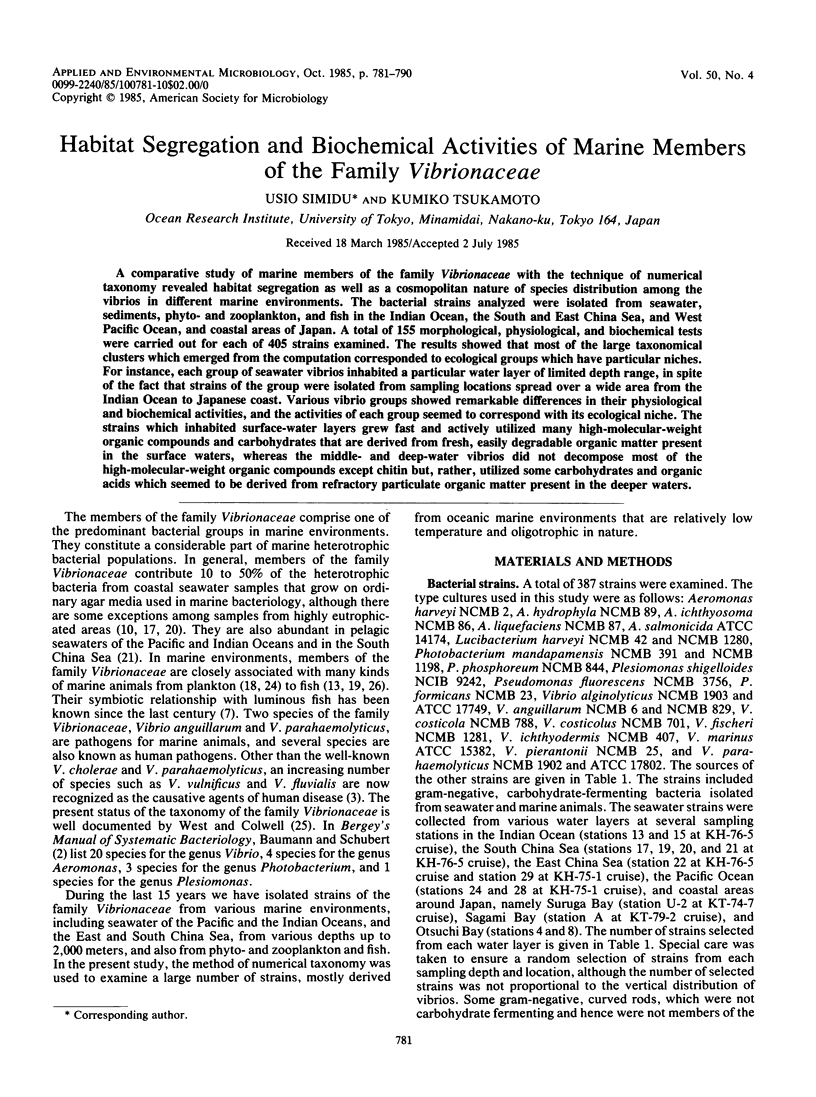
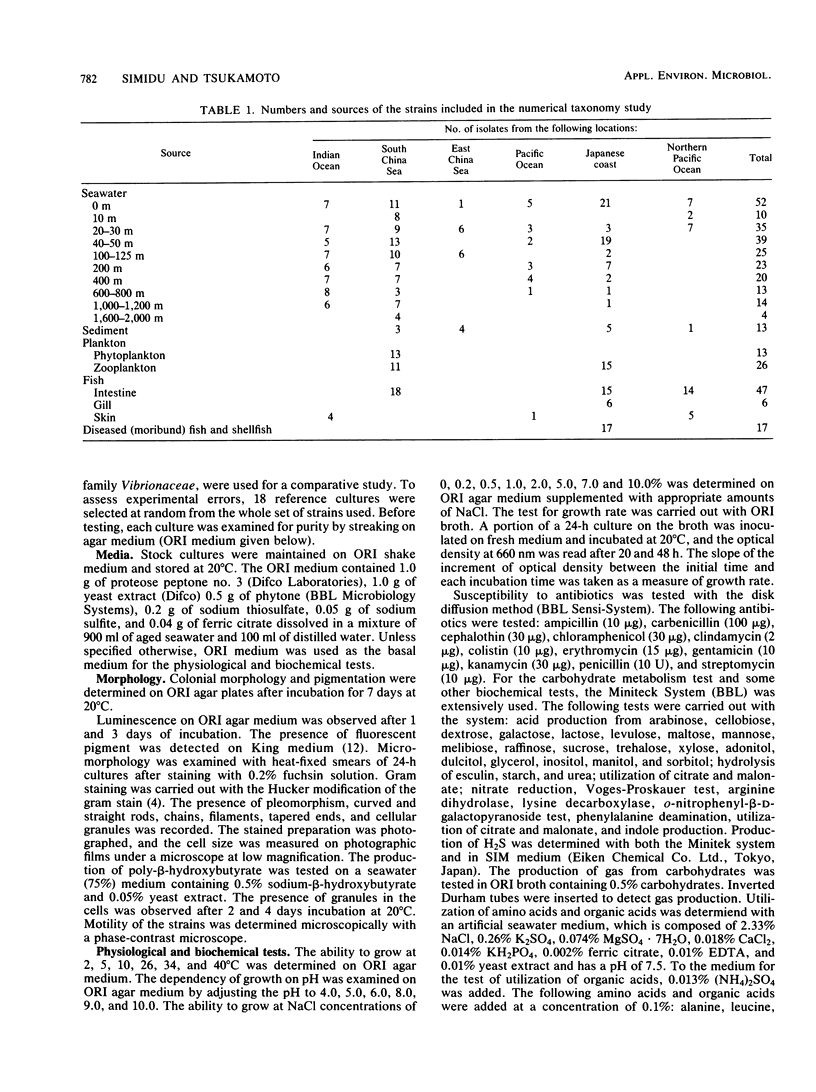

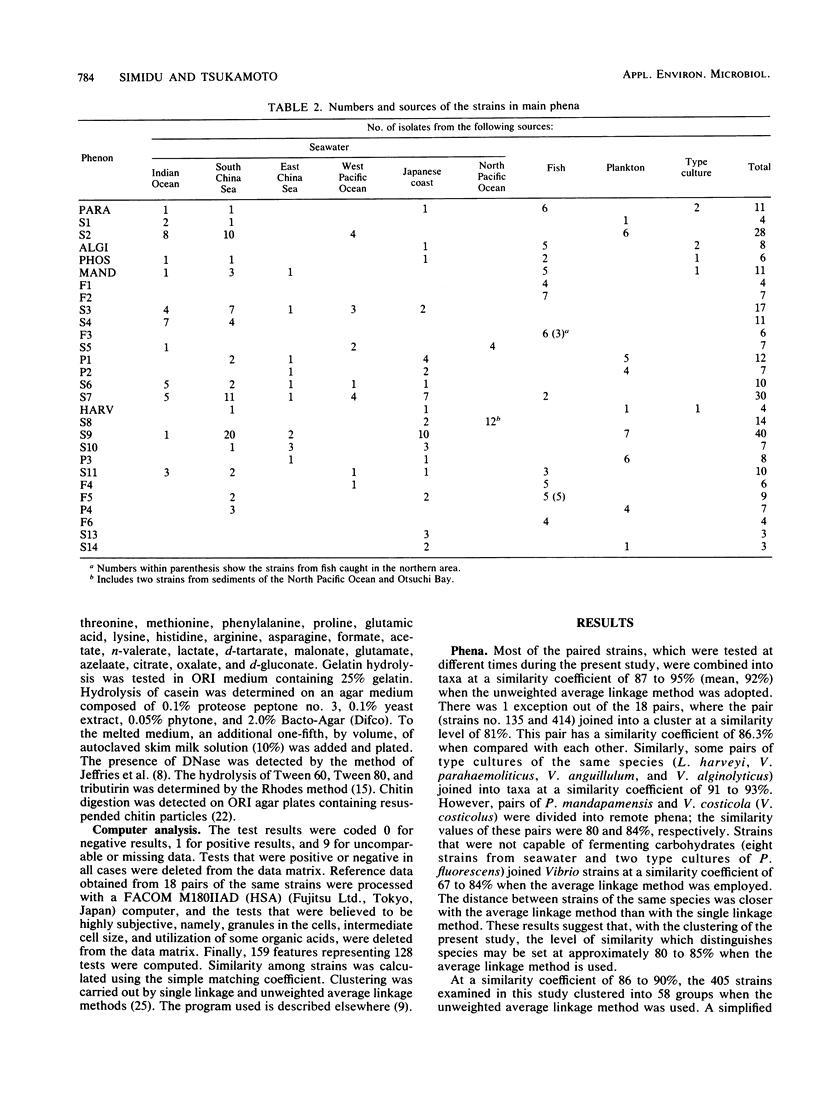
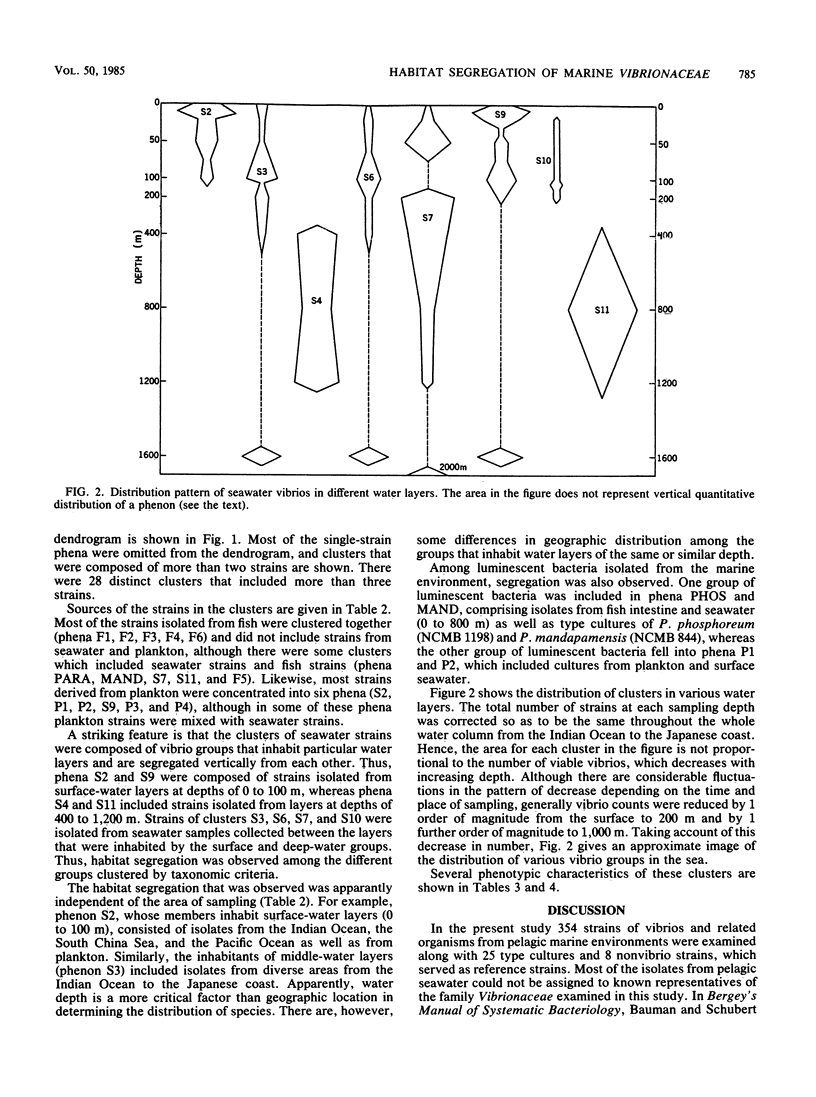
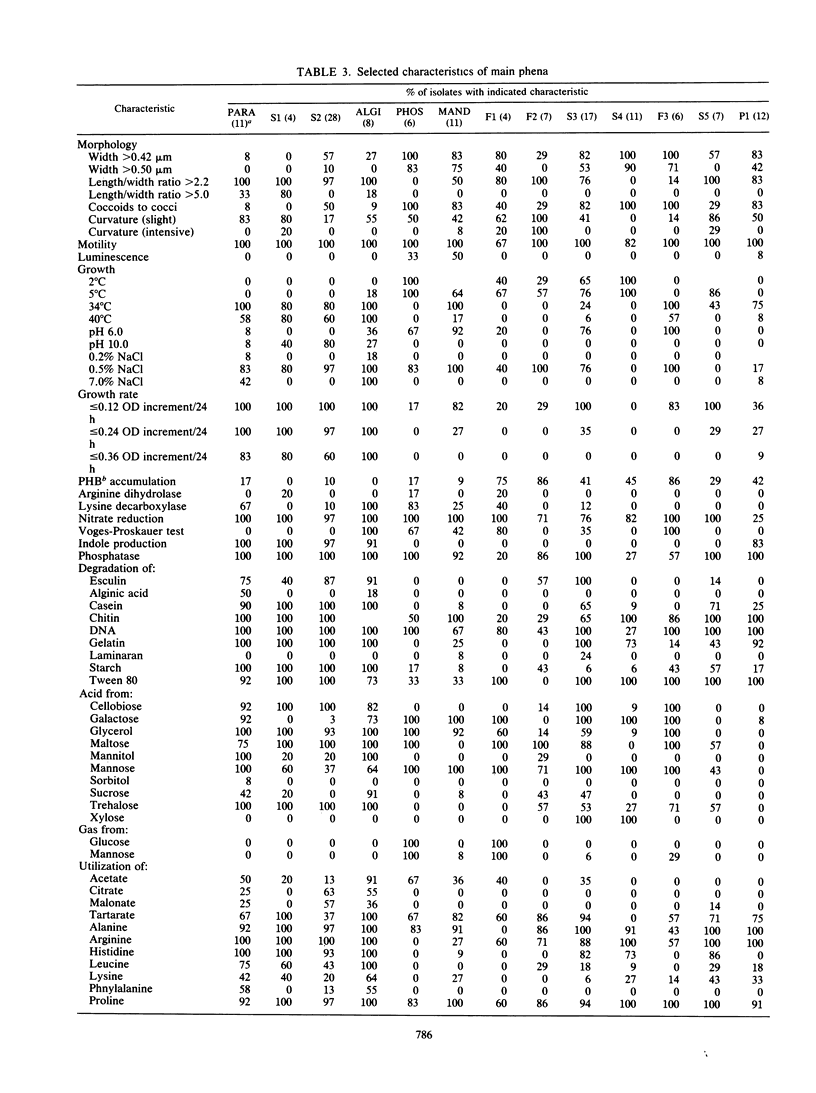
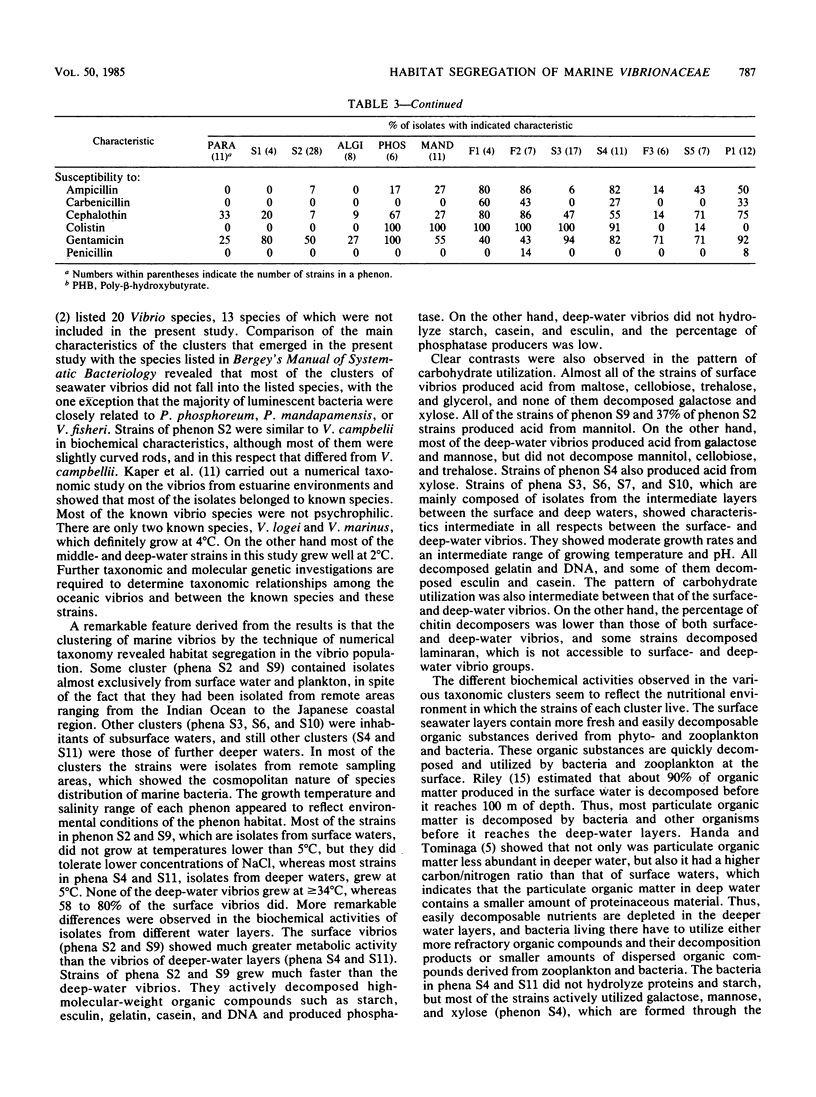
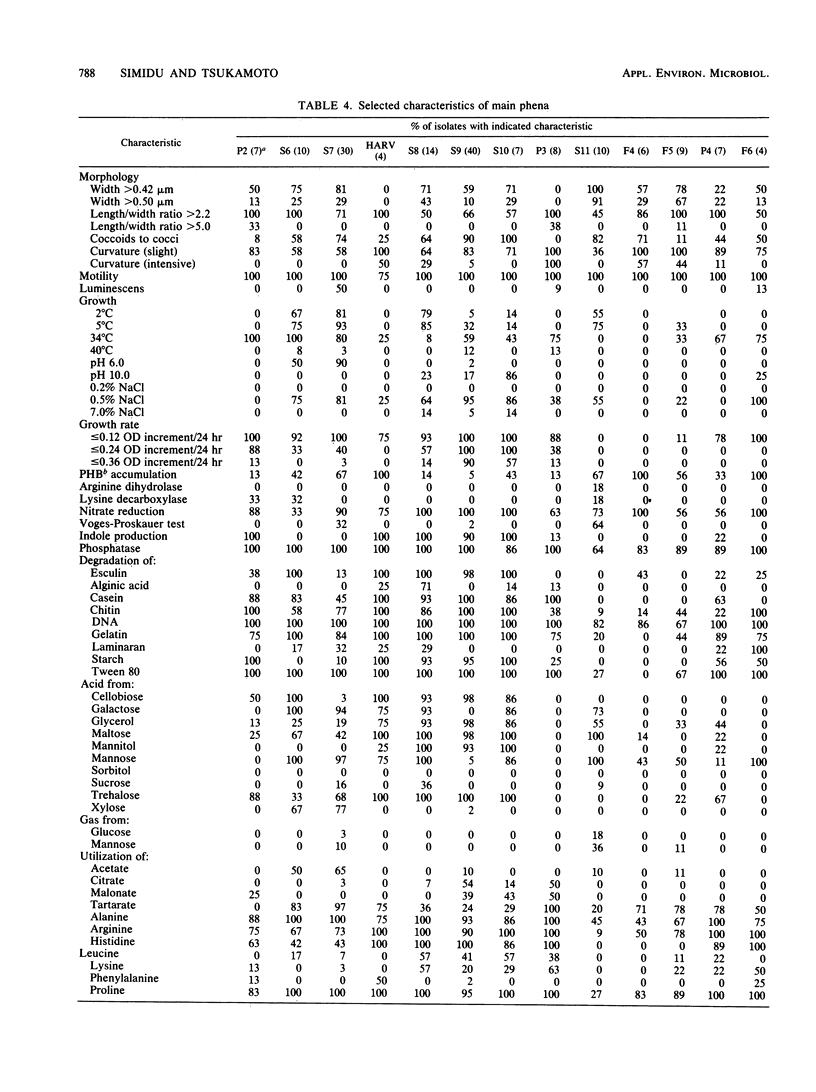
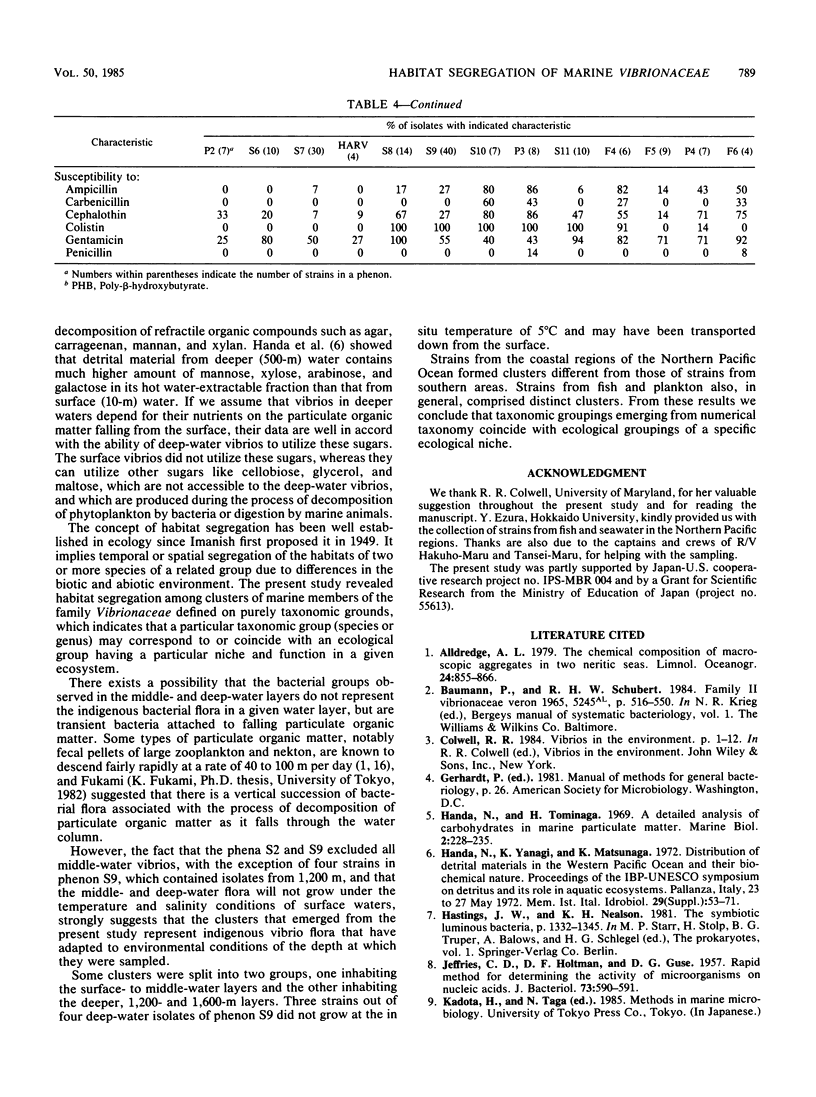
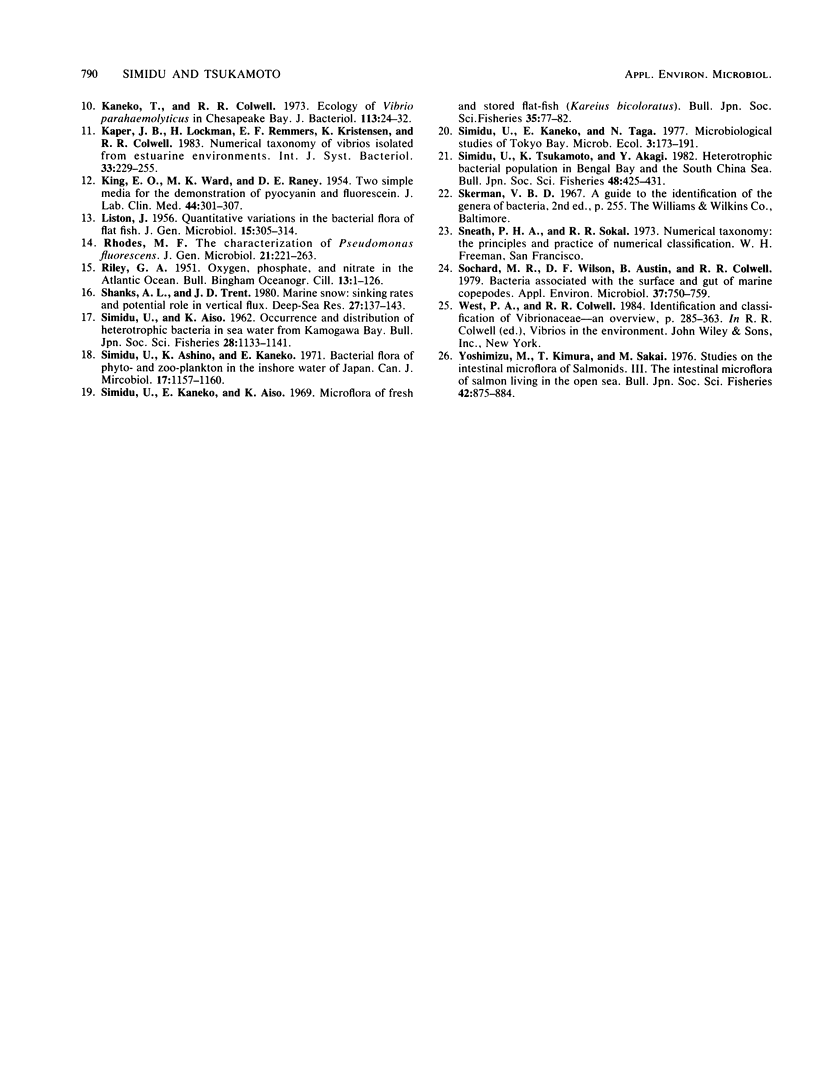
Selected References
These references are in PubMed. This may not be the complete list of references from this article.
- JEFFRIES C. D., HOLTMAN D. F., GUSE D. G. Rapid method for determining the activity of microorganisms on nucleic acids. J Bacteriol. 1957 Apr;73(4):590–591. doi: 10.1128/jb.73.4.590-591.1957. [DOI] [PMC free article] [PubMed] [Google Scholar]
- KING E. O., WARD M. K., RANEY D. E. Two simple media for the demonstration of pyocyanin and fluorescin. J Lab Clin Med. 1954 Aug;44(2):301–307. [PubMed] [Google Scholar]
- Kaneko T., Colwell R. R. Ecology of Vibrio parahaemolyticus in Chesapeake Bay. J Bacteriol. 1973 Jan;113(1):24–32. doi: 10.1128/jb.113.1.24-32.1973. [DOI] [PMC free article] [PubMed] [Google Scholar]
- LISTON J. Quantitative variations in the bacterial flora of flatfish. J Gen Microbiol. 1956 Oct;15(2):305–314. doi: 10.1099/00221287-15-2-305. [DOI] [PubMed] [Google Scholar]
- Simidu U., Ashino K., Kaneko E. Bacterial flora of phyto- and zoo-plankton in the inshore water of Japan. Can J Microbiol. 1971 Sep;17(9):1157–1160. doi: 10.1139/m71-184. [DOI] [PubMed] [Google Scholar]
- Sochard M. R., Wilson D. F., Austin B., Colwell R. R. Bacteria associated with the surface and gut of marine copepods. Appl Environ Microbiol. 1979 Apr;37(4):750–759. doi: 10.1128/aem.37.4.750-759.1979. [DOI] [PMC free article] [PubMed] [Google Scholar]


